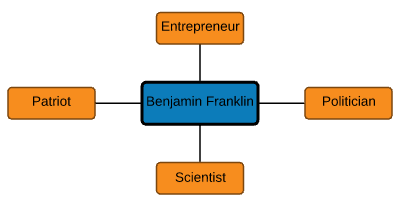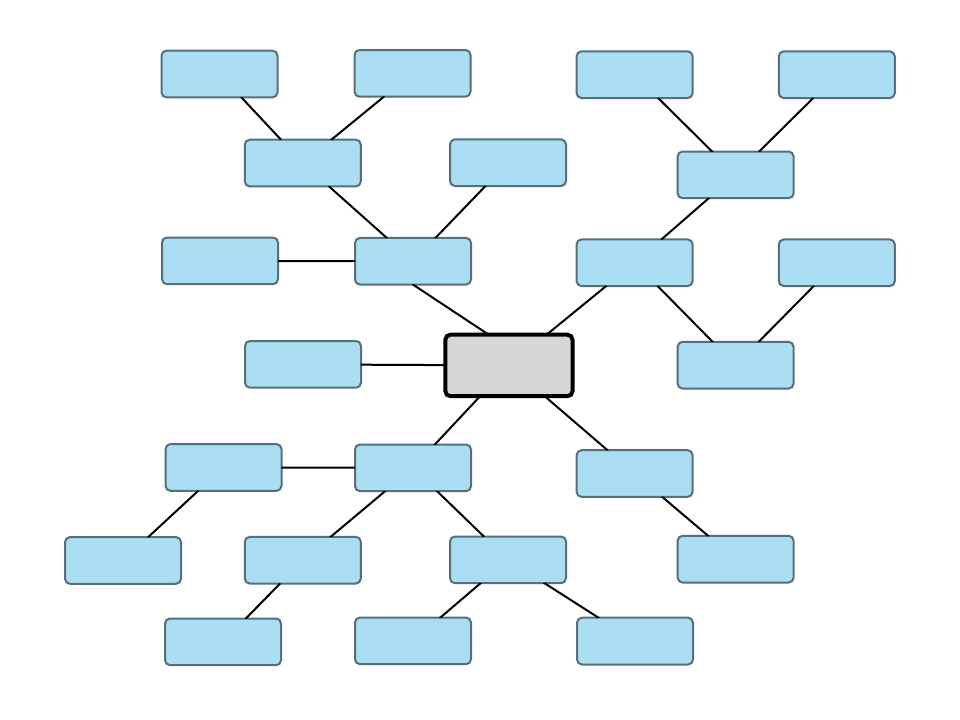With professional mind mapping software, you can better learn and retain important concepts and ideas. Learn the essentials of mind mapping, how they're used, and how to draw one.
5 minute read
Want to create your own mind map? Try Lucidchart. It's fast, easy, and totally free.
What is a mind map?
A mind map is a free-flowing depiction of thoughts that branch out from a central concept. The diagram’s visual organization promotes brainstorming of ideas, effective note taking, stronger retention and impactful presentation. Mind mapping ranges from simple to elaborate, and may be either hand-drawn or computer-drawn. Depending on your purpose and time, the mind map can include artful, purposeful elements like pictures, drawings, curvy lines of varying thickness and multiple colors.


For a use case like real-time note taking or brainstorming, it may quickly and simply show how ideas, often expressed in just one to three words, radiate out from a central theme. A platform like Lucidchart allows this to occur intuitively, with items automatically resizing and rearranging. With more time, the diagram can become more artful and powerful in its impact. It may even become art. Other terms for mind maps are idea maps, spray diagrams, and radial trees.
Versatile use cases
In education, business, computer science, or pretty much any field:
Mind maps are so versatile and easy to produce that they are widely used in education, the business world, computer science and other fields.Brainstorming:
Mind mapping is ideal for brainstorming ideas around a concept. It focuses thinking, giving rise to other thoughts and showing how they relate to each other. Individuals or teams can use it to unleash creativity while keeping on track.Note taking:
Students or business professionals can draw mind maps to capture and organize ideas from a lecture, presentation, meeting or brainstorming session. For more detail, you can add off-chart notes using a program like Lucidchart. Just click on the notes icon to see them.Studying and analyzing:
Studies have shown increased memory retention with mind maps. Even if you didn’t start with a mind map, you might create one from your notes to better understand and interpret the material.Decision making:
Mapping can help to think through the factors involved to arrive at a good decision.Presenting:
Mind maps can present ideas with visual impact. They are easily placed into programs like PowerPoint, Word, Excel and others.Personal development:
Think through a personal or career goal, solve a problem or envision your future by organizing your ideas in a mind map.Creative projects:
Plot out a story line, overcome writer’s block and open yourself to new ideas in any creative endeavor.Planning:
Plan an event, meeting or project with mind mapping.Precursor to other diagramming:
mind maps can be used in the early stages of a project to organize and focus it. Later, data may be more effectively presented with other types of diagramming, depending on the purpose and nature of the project.Art:
People have created beautiful mind maps as works of art, such as these recent examples.
Want to create your own mind map? Try Lucidchart. It's fast, easy, and totally free.
Make a mind mapHow to Make a Mind Map
1. Begin with the main concept
First determine the main purpose of your mind map and write it down. Since mind maps start from the inside and expand outward, your central idea will become the core topic of the diagram. Your main concept could be:
-
A problem you’re trying to work through
-
The project you’re brainstorming
-
A difficult concept that you’re trying to learn
Let’s say you have to write an essay on Benjamin Franklin. In this case, Benjamin Franklin would be the main concept since he is the focus of the essay.

2. Add branches to the main concept
Now that you have determined the main purpose of your mind map, add branches that will outline the most basic subtopics. The branches should help you to begin organizing the information. Don’t worry about including a lot of details, keywords and short phrases will be more than enough.
In the case of our essay on Benjamin Franklin, the main subtopics that you should chart out are the main branches that explain his life. More detail into these initial branches will be included as we continue to add branches.

3. Explore topics by adding more branches
Once you have identifying the main subjects within your topic, add more shapes until you run out of valuable information. Make sure that you continue to organize your information with the most important things closer to the main concept shape, and the more specific details further away.
4. Add images and colors
Maintain organization within your mind map by using standard colors for the different levels of thoughts within your diagram. If you are using Lucidchart, the colors will be managed for you. Furthermore, using images will help you to both visualize, and memorize the various parts of your mind map. Images can also be used to link shapes instead of the traditional box shape.
In our example with Benjamin Franklin, we have added more branches until we were ready to write the essay. If we were studying for an exam instead of writing an essay, the icons used could be especially helpful to boost memorization.

Mind maps templates and examples
Blank mind map template
Not entirely sure where to begin? Start out with this blank mind map template and let your creativity take over from there. Whether you need to brainstorm ideas for your business or organize your notes from school, simply put a subject in the center and go. You can customize this template and add more shapes to take your mind map to another level.
Simple mind map template
Mind maps can become quite expansive and elaborate depending on what you choose as a topic and how far you decide to branch out. This template takes on the challenge of organizing all elements related to a business plan.
Brainstorming mind map template
A mind map is the perfect solution to visualize brainstorms. One solid topic can start a chain reaction of related ideas that'll lead to your next big innovation. Customize this brainstorm mind map template to get a head start and see where your ideas lead you.
Bubble mind map template
Mix things up and try using this bubble mind map template to chart out your concepts and ideas. Mind maps use unique visuals to help you memorize and classify ideas, so consider using bubble shapes for a change from traditional rectangular mind maps.



